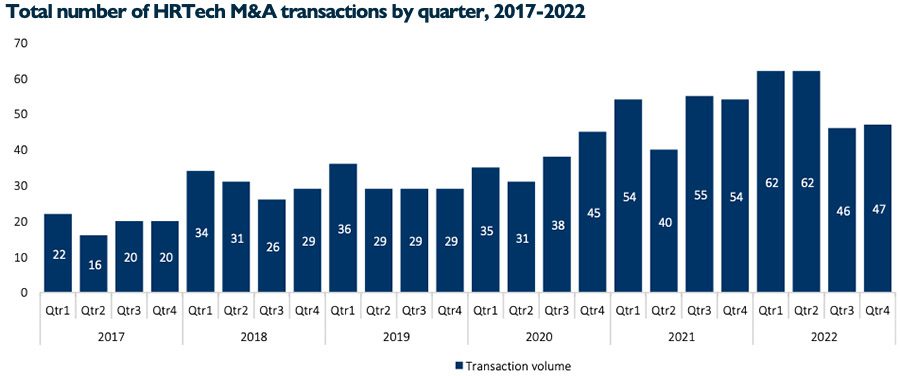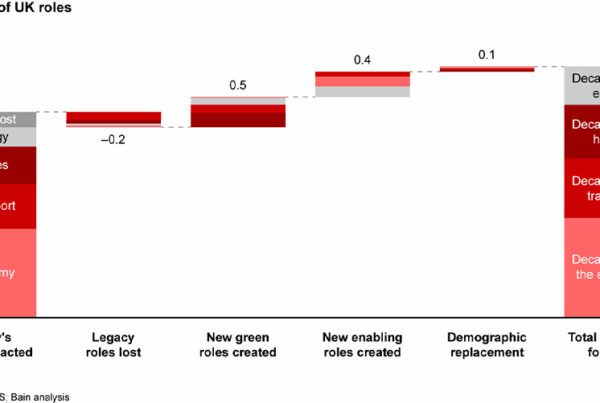The number of HRTech transactions held steadier than the wider merger and acquisition market through 2022, as private equity firms took a growing interest in the segment. Deal transaction value continued to rise, passing the $10 billion mark as companies turn to technology to help bolster flagging human resource strategies.
2022 marked a harsh come-down for the world’s merger and acquisition (M&A) market. With so much economic, geo-political and social uncertainty on the horizon, the inflated value many transactions had accrued in the previous record-setting year were not seen as sustainable levels of risk – and research from multiple firms has since shown that the number of deals and overall value fell significantly over the last 12 months. Overall, there were 19% fewer M&A deals in 2022 than the year before.
Not every segment of the market saw such a bleak outlook, though. In fact, research from Hampleton Partners suggests that HRTech – technology helping firms manage the hiring and retention of staff – saw deal transaction value hit almost $11 billion in 2022; an increase of 282% since the pandemic in 2020.

The continued ‘Great Resignation’ saw employers still struggle to attract talent, with many potential employees having re-evaluated their worth during a pandemic where their skills were routinely described as “essential” – even though their salary did not reflect such claims. This saw large numbers of mid-market firms in particular fail to fill roles for extended periods – while a much-discussed shortage of digital skills compounded the issue. So, more and more, employers sought technological support to help them not only attract new talent, but make the most of the staff they already have – managing training regimes, implementing diversity and inclusion drives, and finding ways to adapt to hybrid and remote working.
“Combined with AI- and technology-based advances, these motivations are driving the HRTech market,” Axel Brill, Director at Hampleton Partners, said. “As a result, what used to be a slow-moving corporate technology space a decade ago is now a multi-billion dollar market of HR cloud solutions that address the needs for the future of work. HR leaders worldwide have recognised the importance of rethinking their people strategy and placing employee wellbeing on top of the agenda. High growth companies, innovative solutions and breakthrough technologies are dominating the space and both financial and strategic investors are determined to be part of this development.”
M&A volume for the global market declined steadily after the second quarter of 2022. While the HRTech segment also saw volume fall in the second half, however, it did see the number of deals begin to rise again in the final quarter of the year.

This was a trend driven by interest from private equity firms – which is now at its highest rate since the pre-pandemic era. Investors seem to be well aware that demand for HRTech will be a running theme in the coming months, meaning the opportunities for quick returns on deals is higher.
At the same time, many of the most regular buyers in the segment are relatively firms. For example, Y Combinator – which completed moves for compliance and payroll solution firm Deal; Vietnamese payroll platform Gimo; and employee financial wellness FinTech NowPay – was one of the most regular investors. Demand like this suggests that as such accelerators build momentum, HRTech M&A activity will continue to grow in the coming months.
Brill added, “The fact that start-up accelerator, Y Combinator, is one of the three most active acquirers in this space shows that many HRTech companies are still in their early stages. We expect the following years to see a further boom in the sector, as more and more HR leaders start reshaping their people strategies by integrating new technologies and platforms to drive retention, engagement and productivity.”




